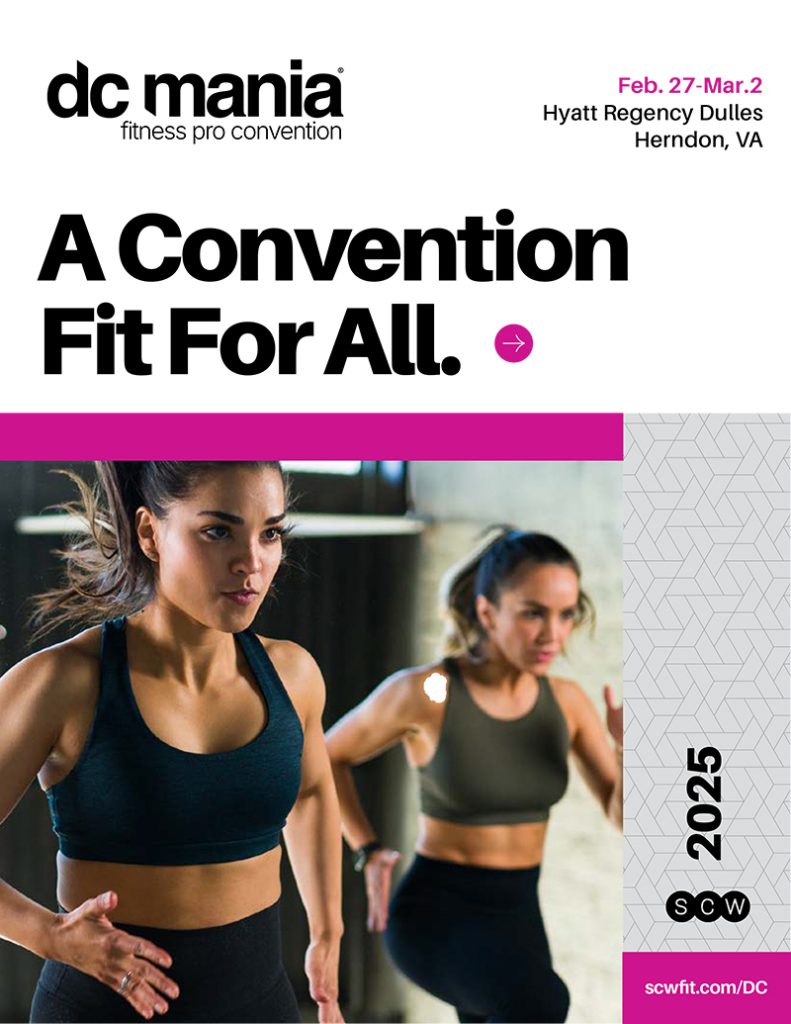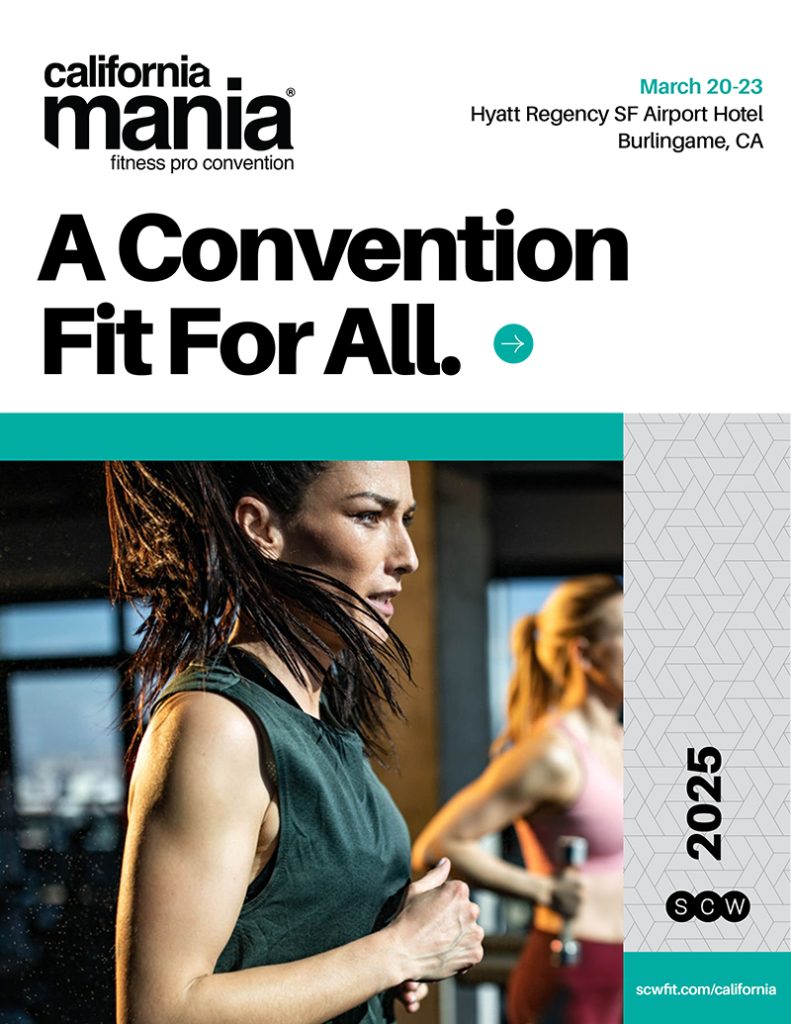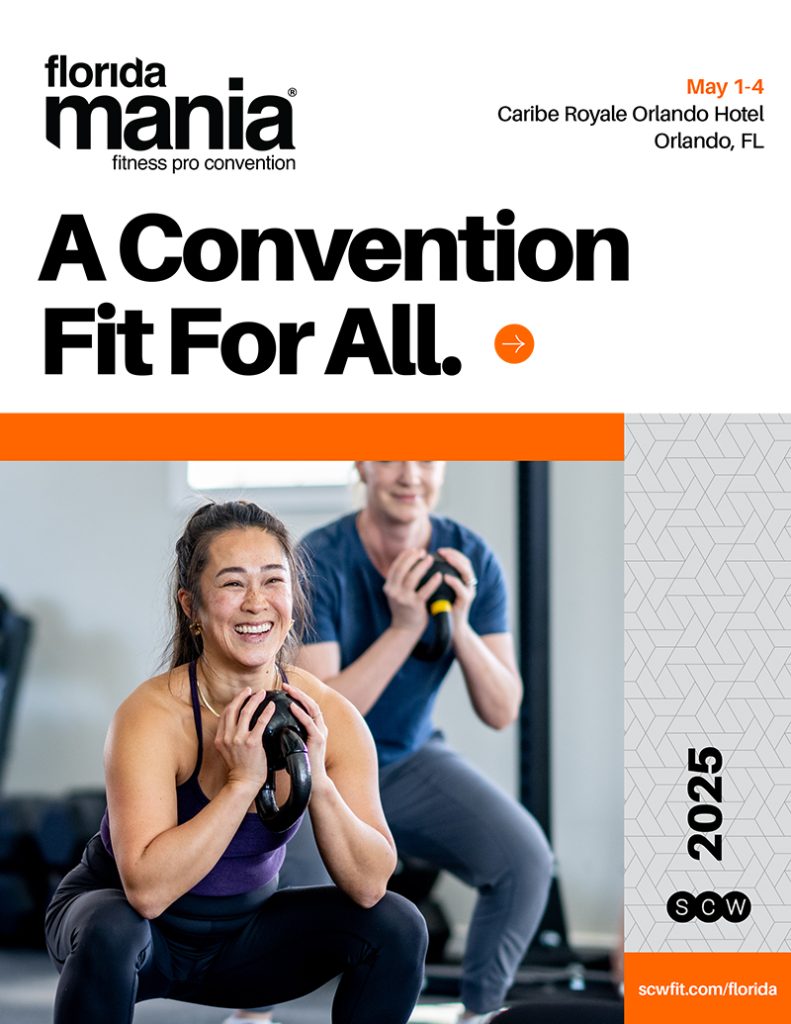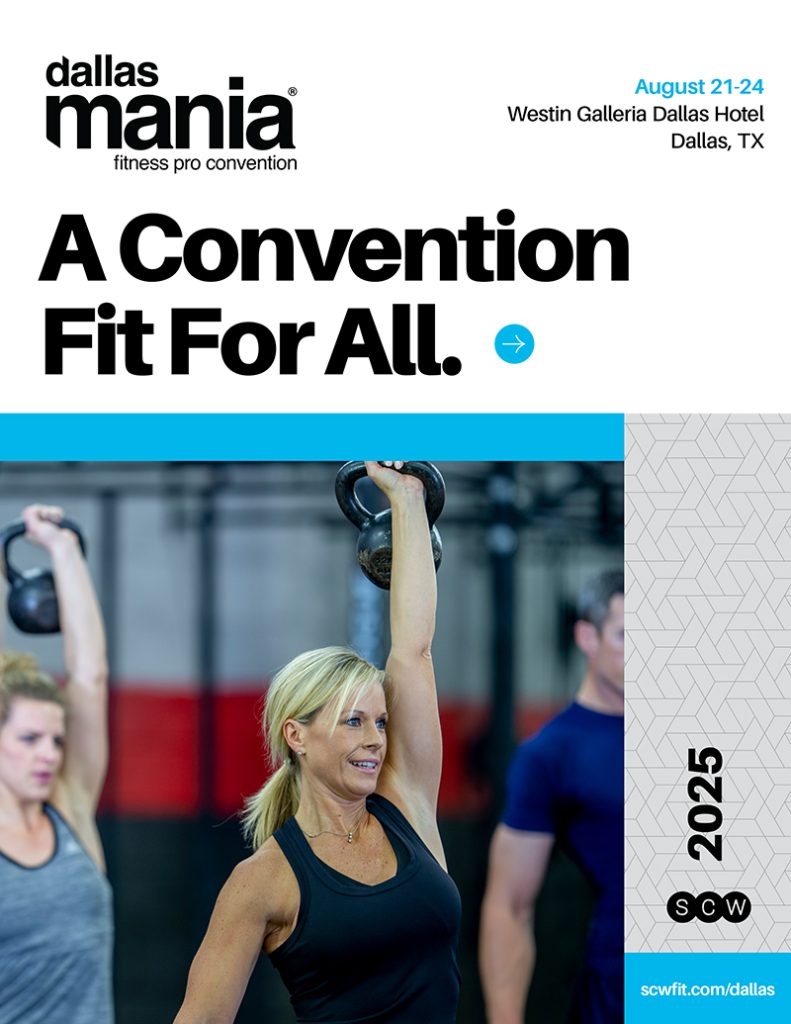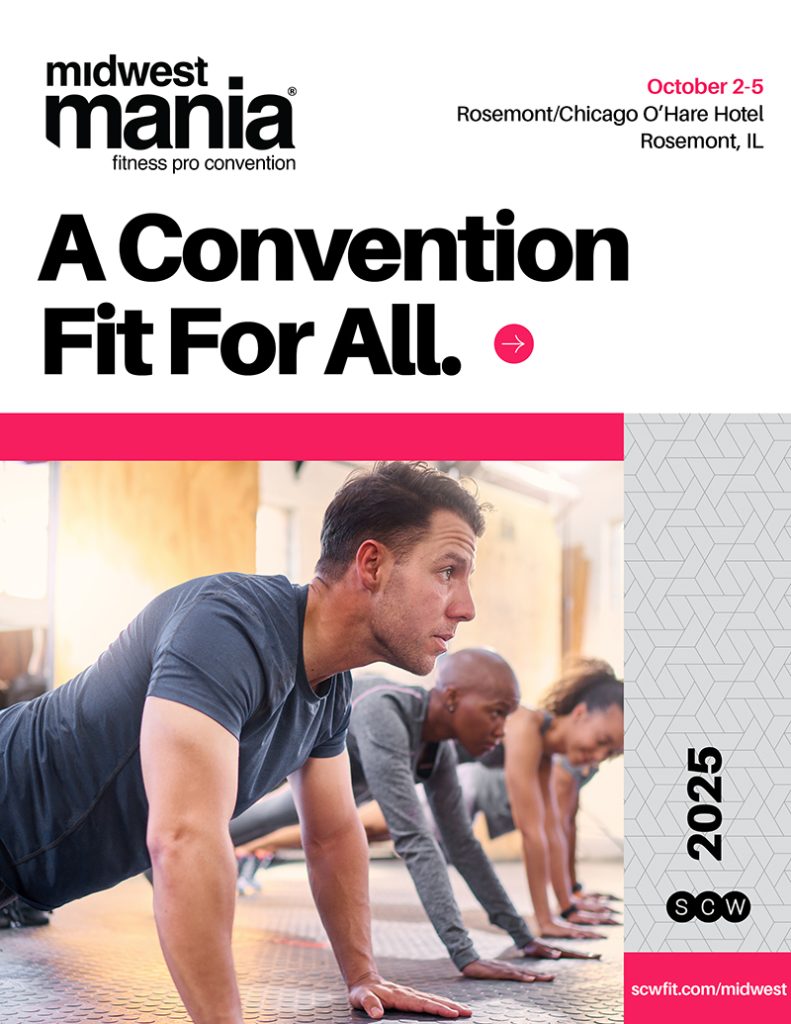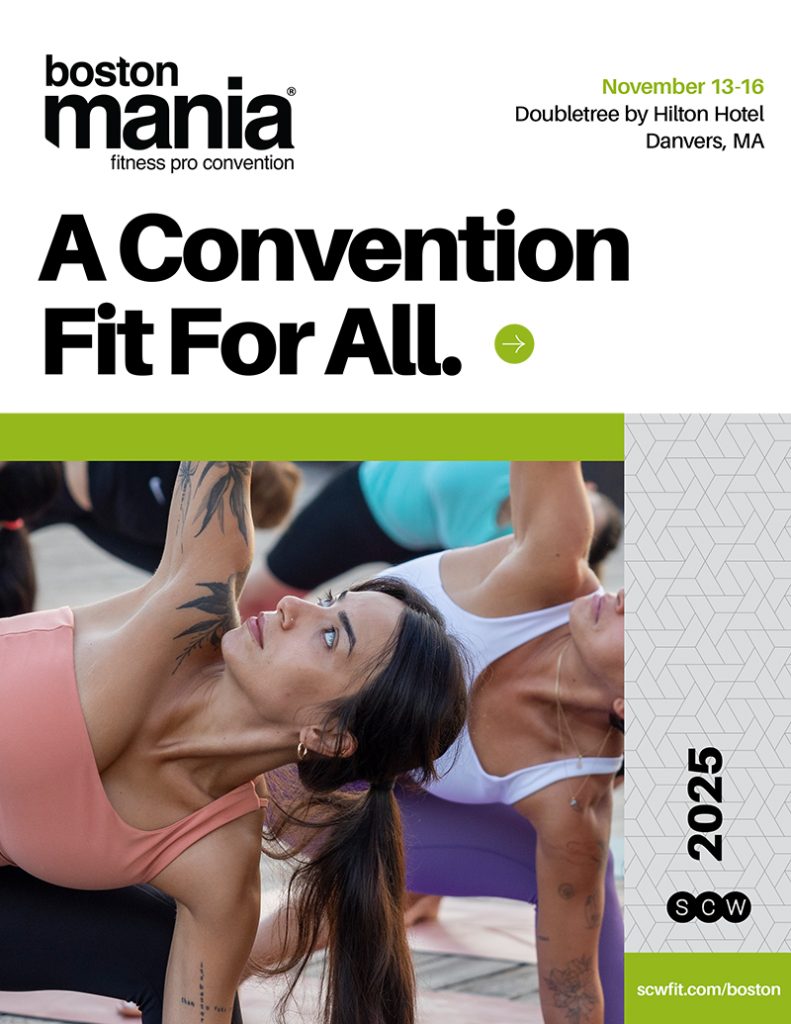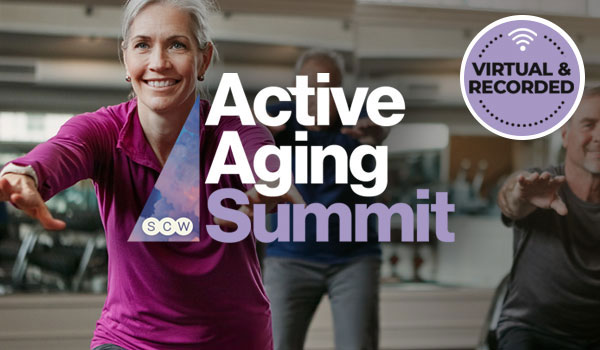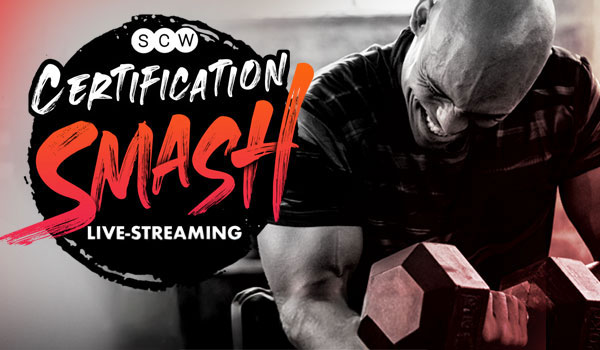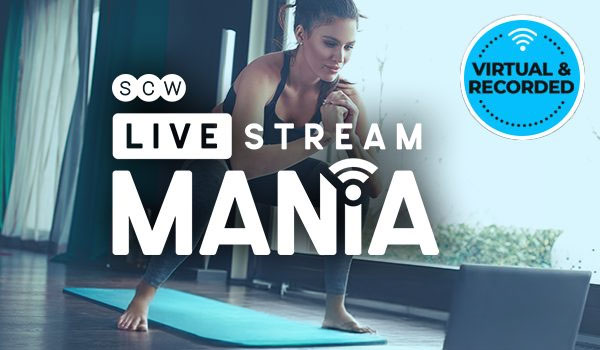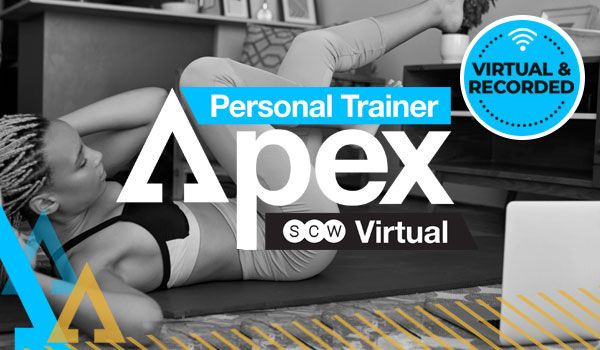
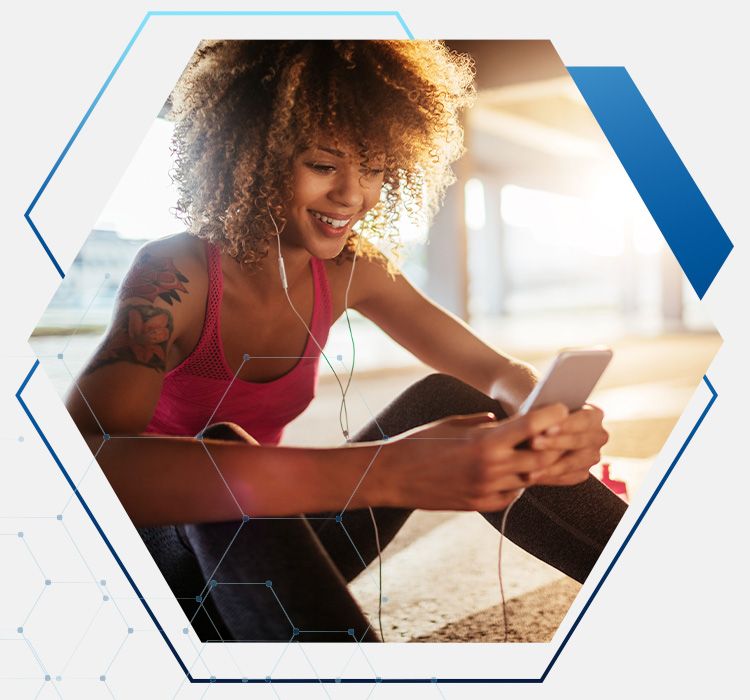
Are Instructors
Your Influencers?
They Should Be.
By Jeffrey Pinkerton
Are you liking your likes? You may have noticed over the past few years that your Facebook Business posts are getting drastically fewer likes and comments than in the past. Here’s why: In 2018, Facebook announced that it would reprioritize its newsfeed to make sure that friends and family remain at the “core of the experience.” And while that sounds nice for your personal use, Facebook’s algorithm has reduced the visibility of posts from the businesses, brands and media that were, in Mark Zuckerberg’s words (or the words of his copywriter), “crowding out the personal moments.” Reading between the lines, for a business to show up in people’s newsfeeds, the business needs to pay for advertising. But, I have a better solution.
Organic Growth Isn’t Growing: Following the changes to Facebook’s algorithm, business posts immediately became devalued. A report from Hootsuite in 2021 estimated that the average reach for an organic Facebook post for a business is only 5.2%. This means that only a fraction of your followers actually ever sees your business posts. And, if none of your followers laugh, love, comment or share that post in the first hours of its life, it’s likely to die a death of single digit likes. And, when you add buzzy sales words like “free,” “discount,” “no joining fee,” or “limited time offer” to your caption (or worse, add those words in big block letters to the image itself), Facebook is likely to devalue that post even further.
Check My Meta Math: To confirm my misgivings of Meta’s manipulative math, go to your business’ Facebook page and look at your last few posts. Find a few that are specifically trying to sell something. Depending on the content (plain text, photo, marketing image, video) and the caption (sales words), you’re likely to see posts with one, two and even zero likes. If you’d like to learn more about Facebook’s algorithm for businesses, Google “Facebook algorithm for business pages 2023” and settle in for some serious down-the-rabbit-hole reading.
 How to Win Members and Influence People: The battle for business page visibility will continue to be an ever-changing, somewhat mysterious search for the perfect post. But, here is what we know to be true: Facebook values content that is engaging, original and authentic, so you should post content that is engaging, original and authentic. All of your other posts (selling, big bold text, special offers, stock photos, etc.), need to be shifted to paid ads or boosted posts. So, where is that original, authentic content going to come from? Who on your team can you ask to create engaging content? Content that will present the value that your facility offers and highlight what sets you apart? Something fun or funny and meaningful and memorable? With a personal invitation to come and try something at your facility… say, a group fitness workout? Your instructors.
How to Win Members and Influence People: The battle for business page visibility will continue to be an ever-changing, somewhat mysterious search for the perfect post. But, here is what we know to be true: Facebook values content that is engaging, original and authentic, so you should post content that is engaging, original and authentic. All of your other posts (selling, big bold text, special offers, stock photos, etc.), need to be shifted to paid ads or boosted posts. So, where is that original, authentic content going to come from? Who on your team can you ask to create engaging content? Content that will present the value that your facility offers and highlight what sets you apart? Something fun or funny and meaningful and memorable? With a personal invitation to come and try something at your facility… say, a group fitness workout? Your instructors.
Meet Your Influencers: Your Instructors: Instructors are the most member-facing, engaging, face-of-your-facility people. They have 30 or 60 minutes of face time with dozens of people, several times a week, plus they’re likely connected to all types of people in your community. And, now, they can be your influencers… to create content for your team and to deliver content to their followers directly to help promote and inspire more people to come try what you have to offer.
Tips for Turning Instructors Into Influencers: Make instructors your ambassadors, so they’ll post meaningful and memorable content, and make your business more visible in more feeds. You probably already know instructors who are present and savvy on social, but here are ideas to get all of your instructors involved:
Good: Ask instructors to love, laugh, comment and share your posts.
Better: Ask instructors to take pictures and video to send to you to post.
Best: Ask instructors to post to their own feeds and stories and tag you.
In return, here are a few ideas for incentivizing these new ambassadors:
Good: Capture and share with them high-quality pictures and videos of their workouts (or before/after) so they have content to share.
Better: Provide them with apparel, accessories, etc. from your facility as compensation. What better way to get your brand seen by all of their followers!
Best: Offer an increased class rate to those who regularly post about you on social. I would recommend you set a rate based on their number of followers and quality of content.
Essential: Make sure they have a simple and supported call to action, like “join me for a workout” or “DM me for a free pass” or “be my guest this weekend.”
Social Media is Changing… Are You? Digital marketing may be ever-shifting, but don’t assume you have to move all of your social media efforts to paid advertising. Get your team involved. Ask for their help. Inspire (or make it part of their job description and require) your instructors to help in the creation of your company’s organic, authentic, and more effective social media content. Better content not only makes a better impression but will help sell the experience at your facility, a message that will literally help you reach more people.
 About the Author: Jeffrey Pinkerton
About the Author: Jeffrey Pinkerton
Jeffrey Pinkerton is the Business Development Manager for MOSSA.

Unlocking Client Retention
and Injury Prevention
Through Postural Alignment!
By Isabella Chock
As fitness professionals, we understand the importance of helping our clients achieve long-term consistency in their fitness journeys. However, the risk of injuries and subsequent drop-off in client attendance can present a persistent and annoying challenge, both from a training and a business perspective. In order to address these issues and maximize client retention, it’s crucial to focus on a key factor often overlooked – postural alignment.
The Pitfalls of Misalignments:
Misalignments in the body lead to compensations, imbalances, and ultimately, injuries. Many clients start their fitness journeys with enthusiasm, only to experience diminishing results or even give up due to underlying postural issues causing pain, limited mobility, tightness, and chronic injury. Simply focusing on external goals and performance can neglect the critical aspect of postural alignment, hindering progress and discouraging clients. As fitness professionals, we are quite often educated on only the dynamic muscular system; educational and vocational focus tends to neglect the intrinsic muscles that stabilize one’s skeleton. It is essential for fitness professionals to recognize the impact of misalignments on long-term success and consistency.
Introducing Symmetry’s Quantification System:
Symmetry’s revolutionary, patent-pending software system, AlignSmart™ Technology, allows fitness professionals to accurately measure and identify postural misalignments. By assessing 20 different bony landmarks, AlignSmart™ provides a comprehensive understanding of the client’s body architecture that directly impacts body mechanics. Armed with this invaluable insight, you can design tailored workouts and postural corrective exercises that specifically target client’s individual imbalances. The AlignSmart™ system supports client compliance at home with compliance trackers, messaging systems, and instructional videos on the app. This personalized approach not only reduces the risk of injuries, but also maximizes the effectiveness of training, setting the stage for optimal results.
The Power of Correcting Misalignments:
When clients experience improvements in postural alignment through Symmetry, the benefits are twofold. First, by minimizing compensations and imbalances, clients can perform exercises with better form and efficiency, unlocking their full potential. Second, the reduced risk of injuries leads to increased satisfaction and confidence in their fitness journey. As a result, clients are more likely to maintain long-term commitment, achieve their goals, and even become enthusiastic ambassadors who refer new clients to your business.
Enhancing Client Retention:
The biggest question we get from fitness professionals is this: “How do I get my clients to maintain a daily habit of stretching in-between my sessions with them?” The answer: Charge for it! Symmetry is in the process of filing for an additional patent on how we sell our system to clients, which is unique to all other fitness businesses. Instead of just charging for your time at your facility, Symmetry has developed a process that reinforces the responsibility of the client to make daily habit changes at home, regardless of working with you personally or not. Incorporating Symmetry’s quantification AlignSmart™ system into your training approach is a game-changer for fitness professionals seeking to enhance client retention and prevent injury-related drop-offs. By proactively addressing postural misalignments, you create a solid foundation of stability, efficiency, and longevity for your clients. With Symmetry, you have the power to deliver exceptional results, ensure client satisfaction, and build a thriving fitness business that ensures long-term consistency.
Don’t underestimate the role of postural alignment in your clients’ fitness journeys. By easily integrating Symmetry’s AlignSmart™ system to your practice, you can take a proactive approach to prevent injuries, enhance client retention, and deliver outstanding results. Empower yourself with the tools to unlock the full potential of your clients’ bodies and pave the way for a sustainable, injury-free fitness experience. With Symmetry, you’re equipped to lead the way in the fitness industry, ensuring long-term success for both you and your clients.
 About the Author: Isabella Chock
About the Author: Isabella Chock
Isabella has witnessed the transformative power of Symmetry personally and professionally for three years now. Unwilling to accept doctors suggestions to forfeit the active life she loved in order to treat her chronic pain, she turned to Symmetry. Now, she has her active life back, is pain and injury free, and loves to help others discover pain-free living using Symmetry’s Alignsmart System.
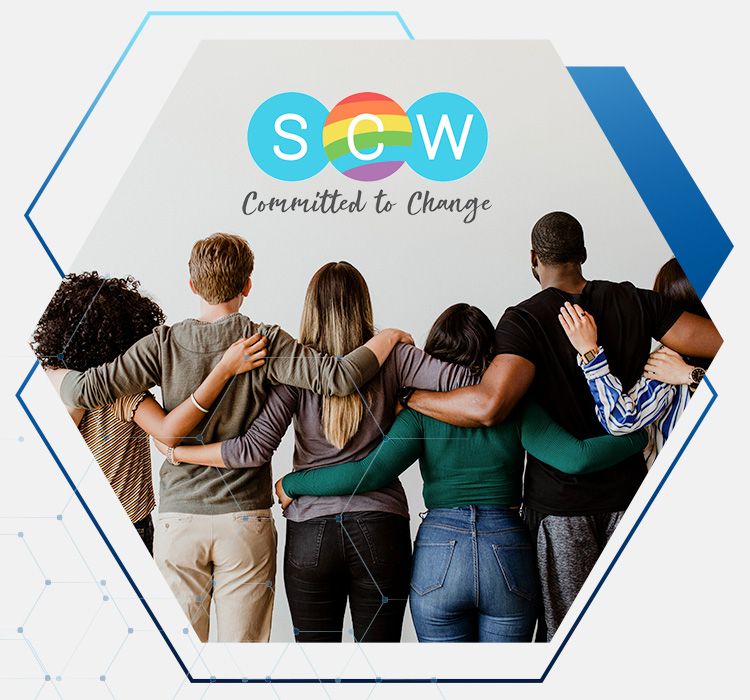
Why LGBTQIA+ Fitness Classes and Clubs are Important, Even After Pride Month Ends
While working as a personal trainer for a national gym chain, Lara Americo was expected to conduct fitness assessments on all new members. The goal: use information about strength, endurance, and flexibility and compare the results against averages for others of the same age and gender to establish a baseline fitness level.
“Everyone has an individual level of fitness, and everyone needs an individual level of programming,” Americo explains. “I would do away with those, and there would always be pushback from the gym.”
The fitness assessments were just one of the “problematic norms” that Americo, a trans woman who uses they/them pronouns, experienced in mainstream gym culture. They also felt that the emphasis on performance, appearance, and achieving gendered body ideals was especially damaging to LGBTQIA+ members—and even prevented some in the community from joining a gym at all.
“Mainstream fitness can be pretty toxic,” Americo adds. “It’s not a fun place to be in a gym where everything is about grunting and hating your body.”
More than one-third of LGBTQ+ Americans experienced some form of discrimination in the past year and often reported altering aspects of their personal lives to avoid the experience of discrimination. A separate study found that half of LGBTQ participants felt uncomfortable at the gym as a direct result of their sexual orientation.
Some gyms and fitness brands host special programming in June in honor of Pride Month. Still, a growing number of fitness facilities are using gender-neutral language, asking clients about their pronouns, and promising inclusive classes and safe spaces all year long. Some gyms even cater exclusively to LGBTQIA+ members.
 Oakland-based The Queer Gym, which bills itself as “America’s 1st queer gym,” opened in 2010. Mark Fisher Fitness in New York and Everybody in Los Angeles promise inclusive spaces, diverse trainers, body positivity, and gender-neutral locker rooms. The OUT Foundation created an Inclusive Gym Finder to help the LGBTQIA+ community find inclusive spaces to break a sweat.
Oakland-based The Queer Gym, which bills itself as “America’s 1st queer gym,” opened in 2010. Mark Fisher Fitness in New York and Everybody in Los Angeles promise inclusive spaces, diverse trainers, body positivity, and gender-neutral locker rooms. The OUT Foundation created an Inclusive Gym Finder to help the LGBTQIA+ community find inclusive spaces to break a sweat.
“LGBT people need a space…to get away from toxic gym culture,” says Americo. “You get to the point where you can’t do it anymore, and you’re working out at home [and] there are so many people [who] want to get away from that. These inclusive spaces have a demand.”
Creating inclusive workout spaces is about more than boosting membership; it’s a commitment to prioritizing the health and well-being of the LGBTQIA+ community.
Research shows that those who identified as LGBTQIA+ were up to 76 percent less likely to participate in team activities and reported up to 2.62 hours less of moderate to vigorous physical activity each week than their heterosexual peers. Lesbian and bisexual women have higher rates of overweight and obesity than straight women.
Exercise isn’t just important for physical health. It’s also an essential component of mental health. It has been shown to ease the symptoms of depression and anxiety, which the LGBTQIA+ community experiences at rates up to 2.5 times higher than their straight or gender-conforming peers.
While classes like Mr. Broadway Body, Hard Core Homo, and Bicep-Tuals target the queer community, Americo believes there are also subtle cues that signal the gym welcomes diverse membership.
Tiny Gym, a diminutive fitness studio in the West Village neighborhood in New York that Americo founded in 2021, was designed to be a safe space “away from toxic gym culture” that welcomes LGBTQIA+ members and allies. Americo was intentional about marketing, using terms like “body positive” and “performance based” and including their pronouns on flyers.
“Those things alone attract queer people because those are things a lot of people in the community prioritize,” they say. “I present everything in a way that a queer person would want to go to the gym without saying it’s queer.”
In addition to providing a supportive, safe space to work out, LGBTQIA+ fitness spaces are also about letting go of gender norms and expectations and finding the joy in moving your body.
“The main rule in Tiny Gym is it has to be fun,” says Americo. “My goal is to subtly, in a small way, change the narrative of fitness.”
 About the Author: Jodi Helmer
About the Author: Jodi Helmer
North Carolina-based freelance journalist Jodi Helmer has written about health topics for WebMD, AARP, HealthCentral, Health, Woman’s Day, Shape and Women’s Health. When she’s not writing, Jodi loves hiking with her dogs and gardening.
Please find the original article HERE
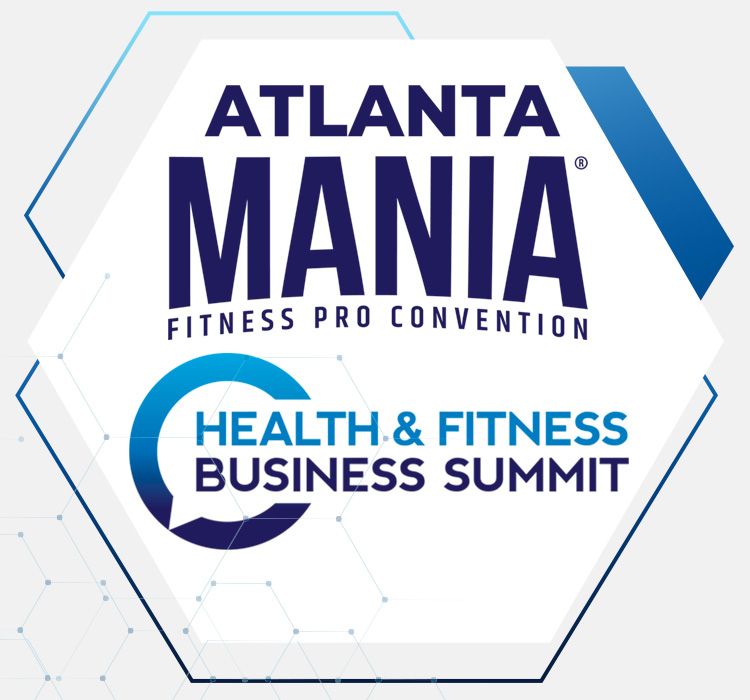
Atlanta MANIA®
Health and Fitness
Business Summit
Jump out of the heat and into the frying pan this July at SCW Health & Fitness Business Summit. Get cooking with 3-days of ultimate education and networking! Your ingredients include 16 business sessions, 5 outstanding Business Entrepreneurs, and 20 hours of spicy education, covering sales, marketing, social media, management, and so much more. Don’t get burned by missing out, July 21-23 at the Grand Hyatt Atlanta Buckhead.
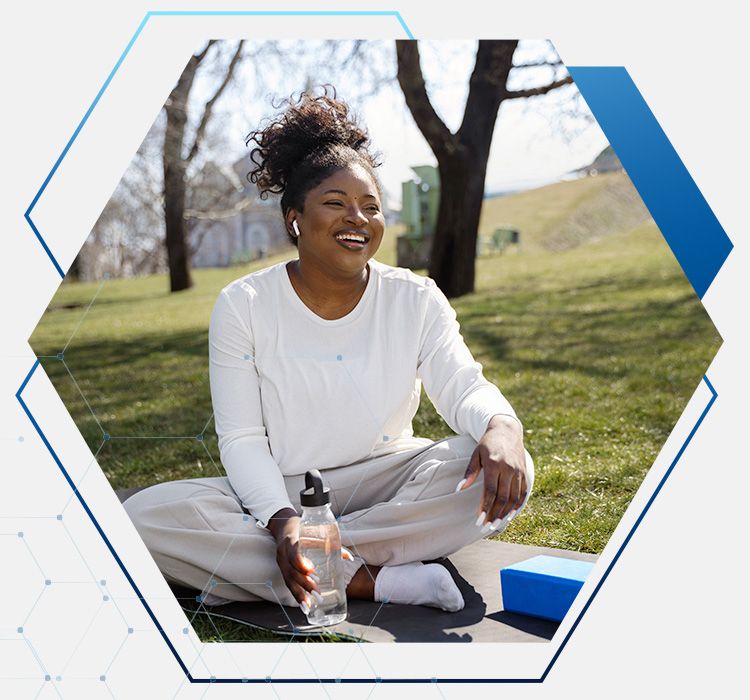
Self Mental health and Wellness, Not Exercise
By Shirley Eichenberger-Archer, JD, MA
People are hurting right now, in more ways than one. The pandemic engendered intense bereavement, economic insecurity, fear of illness and death, social isolation, forced work-from-home, home schooling, heightened domestic conflict, and disruption of daily routines. Simple joys and recreational activities—like going to movies or sporting events, gathering with friends, and traveling—were all restricted. As the world puts one tentative foot in front of another, it is critical that we address mental and emotional health and wellness.
The pandemic significantly disrupted the fitness industry, requiring professionals in every segment and role to reevaluate their services and products. This challenge is an opportunity. “Historically [in the fitness business], we made what we look like the definition of success,” says Petra Kolber, author, speaker, DJ and digital nomad. “When we can realize that our body is not the endgame, but rather a very precious vehicle that is going to carry us into a life of our dreams and help us fulfill our purpose, then we can move into a more uplifting and sustainable conversation around movement and well-being.”
Experts in training, branding, marketing and mental health share how fitness professionals can succeed in today’s market and play a meaningful role in addressing the mental health pandemic.
A Line of Defense
More and more people are seeking relief from chronic stress, anxiety and depression, even if it does not rise to clinical levels. While older adults have borne the greatest physical health risks from the pandemic, younger adults and women, in particular, have suffered higher mental health risks, according to research in The Lancet (Pierce et al. 2020). The American Psychological Association’s Stress in America™ poll revealed that parents, essential workers and people from communities of color were all more likely to report mental and physical health consequences and that Gen Z adults (ages 18–24) were the most likely to report a worsening of their mental health and wellness compared with pre-pandemic times (APA 2021).
Fitness professionals possess important skills and knowledge to address this crisis, but promoting physical training while also uplifting minds and spirits requires clear understanding and intention. Across the spectrum, from business owners to trainers, fit pros can promote exercise not only for its penchant to improve physical health but also for its powerful ability to serve the entire person—to provide mental health and wellness benefits without any of the side effects of pharmaceutical treatments.
Why isn’t everyone turning to exercise first? Does the public know just how much value fitness pros deliver? Let’s take a deep dive into fitness marketing and ask ourselves two questions:
- Are we meeting this moment with messaging and services that address the foremost concerns of prospective clients in a post-pandemic world?
- Are we having conversations with people that support their most urgent needs?
Defining the Mental Health and Wellness Pandemic
Before addressing today’s mental health crisis, it’s important to understand its parameters. “Among adults in the U.S. reporting symptoms of anxiety or depression during the period January to June 2021, 11% of the population admitted to experiencing these symptoms,” says Michael Mantell, PhD, a transformational behavior and leadership coach in San Diego.
The U.S. Centers for Disease Control and Prevention reports that, in December 2020, a whopping 42% of U.S. adults reported anxiety or depression. Between January 20, 2021, and February 1, 2021, more than 2 in 5 adults experienced symptoms of anxiety or depression, and 1 in 4 reported needing, but not receiving, therapy for mental health and wellness (Vahratian et al. 2021).
Americans are not alone in this crisis. The World Health Organization (WHO) emphasized that nations must consider mental health along with public health. “The COVID-19 pandemic has been a stark reminder of the importance of integrating mental health into preparedness and response plans for public health emergencies,” said Dévora Kastel, director of the Department of Mental Health and Substance Use at WHO.
A letter published in Psychological Medicine describes “PTSD as the second tsunami of the SARS-Cov-2 pandemic” (Dutheil, Mondillon & Navel 2020). The authors raise awareness of the global need to consider policies for preventive treatment of individuals with PTSD—particularly frontline workers, patients, caregivers and family members—who may need to cope with trauma and higher suicide risks in upcoming months.
While the need for mental health services is surging, the pandemic is also disrupting the ability of mental healthcare professionals to offer services in 93% of countries worldwide, according to a 2020 WHO survey. Just as the pandemic spotlighted healthcare inequality and disparities in access to care, it also revealed chronic underfunding and lack of national and international support for existing mental health programs. According to pre-COVID-19 estimates, nearly $1 trillion in economic productivity is lost annually from depression and anxiety. And studies show that for every $1 spent on evidence-based care for depression and anxiety, the return is $5 (WHO 2020). Exercise is an evidence-based adjunctive therapy for both depression and anxiety.
Physical Activity for Mental Health and Wellness Benefits
Scientific evidence supports the ability of exercise to alleviate anxiety and depression symptoms, even for those with major depressive disorder. For an in-depth research review showing that exercise can relieve anxiety and depression, read “Train Yourself Happy: Exercise Can Play a Key Role in Alleviating Anxiety and Depression” (Archer 2014).
See also: Training Happy for Positive Behavioral Change
Evidence-Based Benefits of Exercise
Fitness professionals can’t guarantee how a client’s body will change from consistent training, but they can confidently share proven, significant mental health benefits. “Physical activity has a very, very large body of research to support that it is consistently associated with physical and mental benefits,” says Patrick J. O’Connor, PhD, FACSM, professor of kinesiology at the University of Georgia in Athens. And people can experience the benefits of physical activity regardless of age, abilities, ethnicities, shape or size (CDC 2021).
Regular physical activity offers the following evidence-based mental health and wellness benefits:
- reduced feelings of anxiety—both short-term (state anxiety) and long-term (trait anxiety)—in adults
- improved cognition in children ages 6–13 and adults over 50
- fewer depression risks for children from age 6 to adults of all ages
- improved sleep
- better quality of life
- lower risk of dementia, including Alzheimer’s disease
Many mental health benefits occur immediately after one session of moderate-to-vigorous physical activity (CDC 2021).
What Is Mental Health and Wellness?
 Today’s consumer is looking for mental health solutions. The wellness market evolved as consumers wanted to optimize personal health, rather than simply not be sick. Similarly, consumers are now prioritizing mental health and wellness as “self-care.” The mental wellness economy was estimated at $121 billion globally in 2020 by the Global Wellness Institute (GWI 2020). Fitness providers can respond to this market now with targeted messaging to capture strong and growing consumer interest in services and products.
Today’s consumer is looking for mental health solutions. The wellness market evolved as consumers wanted to optimize personal health, rather than simply not be sick. Similarly, consumers are now prioritizing mental health and wellness as “self-care.” The mental wellness economy was estimated at $121 billion globally in 2020 by the Global Wellness Institute (GWI 2020). Fitness providers can respond to this market now with targeted messaging to capture strong and growing consumer interest in services and products.
The Mental Wellness Gym
This market trend began before the pandemic with companies like Coa, which dubs itself “your gym for mental health” and offers online emotional fitness workouts. Coa was founded in 2018 in San Francisco and is backed by Kevin Love, professional basketball player with the Cleveland Cavaliers, among others. Love, who openly discusses his challenges with anxiety and depression, created the Kevin Love Fund, with a commitment to normalize the conversation around mental health and to empower people to pursue mental wellness with the same vigor as physical health.
In 2019, booksellers noted that, for the first time, American readers showed more interest in books on mental health than in books about diet and exercise. “. . . [B]ooks focused on mental well-being are far outpacing titles addressing exercise and dieting,” Liz Harwell, Barnes & Noble senior director of merchandising for trade books, told Michael Schaub of the Los Angeles Times. “When it comes to preparing for New Year’s resolutions and goals, the data shows that across the [Barnes & Noble] chain more people are buying books about mental and emotional well-being as opposed to what were previously the more popular areas of exercise and dieting” (Schaub 2019).
During the pandemic, app-based mental wellness programs surged, with Headspace® and others generating record sales. MindLabs, another app-based mental health program, was founded in 2020. Adnan Ebrahim, co-founder of MindLabs, told TechCrunch that the company’s goal is to “make taking care of your mental health as normal as going to the gym” (Shu 2020).
Another athlete, U.K. footballer Gareth Bale, has backed the London-based company Rowbots, which features a “mental health workout” along with physical training. Incorporating “mental health objectives” is a crucial aspect of modern sports science, Bale told Samuel Fishwick of the Evening Standard (Fishwick 2019).
“All movements are generated from the ground up—the grassroots,” says Victor Brick, co-founder and CEO of Planet Fitness Growth Partners and founder of the John W. Brick Mental Health Foundation in Miami. “People are going to drive this change [for mental wellness options].”
Jessica H. Maurer, FIT4MOM® senior instructor of instructor development in Asheville, North Carolina, agrees. “We are seeing people choose to move for reasons outside of the [weight loss] scale, such as mental clarity, emotional health and stress relief. Again, this is not everyone and all clients, but there is a wave building.”
Training to Thrive: The Dual Continuum of Mental Wellness and Mental Illness
One good way to understand how fitness professionals can assist clients with mental wellness, according to Brick, is with a dual-continuum model of mental wellness and mental illness.
“Historically, mental health has been considered as one continuum,” says Brick. “On one end, you had ‘well-adjusted’ qualities like happiness. Let’s say that’s a 10. As you moved down the scale, minor depression and anxiety cropped up. Further down were clinically diagnosed illnesses like depression, bipolar and schizophrenia, with suicide at the very end. People moved up and down this continuum based on physiology, pathological condition and life events. Fitness and wellness professionals [have tried] to push people up toward the happiness end of the spectrum. This horizontal spectrum is pathologic [of or related to a disease condition] and is related to your brain function.
“In reality, it’s a dual continuum. The vertical axis is salutogenic [of or related to promoting well-being rather than disease]. It deals with holistic approaches and lifestyle programs that can get you from languishing to flourishing.
“For example, you can be depressive or have serious mental illnesses, but you can go from languishing to flourishing if you do all the right things—stop smoking, exercise, have the right friends, get the ‘right’ job. The dual continuum [which incorporates the medical and wellness spectrums] is a clinical way of approaching this topic. You can ‘sell it’ to the medical and wellness communities and the general public. Plus, it shows why we need to get away from talking about just the physical with fitness and start talking about the total body.”
Fitness instructors have the training, the skills and a powerful tool—safe and effective movement—to boost health and wellness; they just need to let the public know. “When trainers understand the power of their tools in helping people deal with emotional distress, sometimes even more directly than medication or psychiatric treatment, and take the time to learn how to approach and properly communicate with those who are emotionally distressed, a training session will bring far more health than another set of crunches will ever do,” says Mantell. “Personal trainers are not doing psychotherapy or counseling. They use fitness to boost healthy mood. They [can] use the tool they have—fitness—to help emotional functioning.”
See also: Exercise Is Good for Mental Health
Shift to a Whole-Person Approach
Brick and others believe the entire industry needs to shift. “Fitness and wellness industries need to realize that they are one and the same [and] start working together instead of separately,” he says. Maurer agrees. “If we want clients to see our services as part of their total wellness, we need to answer their pain points, which go far beyond losing weight. This means less emphasis on ‘calories burned per hour’ and more on the ‘sweat can make you happy’ message,” she says.
Antonio Williams, PhD, FACSM, associate professor at Indiana University in Bloomington and a fitness branding expert, also concurs. “For years, the fitness industry has been making promises about what it can’t deliver—how a person’s body will appear after training. Consequently, consumers judge it based on that message. Because the industry is not promoting the ‘feel better’ message, consumers aren’t going to rate it by that.”
Meet People Where They Are
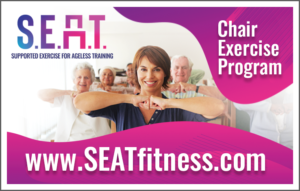 “Since this is a time when everything is so different, it’s an opportunity to go back and define your clients’ needs—specifically their mental and emotional needs—and how you can [meet those] in a unique and differentiated way,” says Billy Polson, co-founder of The Business Movement in San Francisco. “It’s so important for your marketing, branding and connection with your clients that you feel current. Reconnect. Let folks know there are tools they can use to boost their mental and physical health now.”
“Since this is a time when everything is so different, it’s an opportunity to go back and define your clients’ needs—specifically their mental and emotional needs—and how you can [meet those] in a unique and differentiated way,” says Billy Polson, co-founder of The Business Movement in San Francisco. “It’s so important for your marketing, branding and connection with your clients that you feel current. Reconnect. Let folks know there are tools they can use to boost their mental and physical health now.”
Walk the Talk
It’s crucial that fitness professionals address their own mental wellness needs. “Our job is to help bring ‘glow’ back into people’s lives,” says Polson. “Take care of number one first; then you’re at your potential to help others get back.”
“Demonstrate through your own actions that working out is linked with mental health. . . . People need to trust the messenger before they trust the message,” says Michael Matthews, CEO and founder of Legion Athletics in Clearwater, Florida. Lawrence Biscontini, MA, mindful movement specialist and fitness virtual host in Puerto Rico and New York, as well as Mykonos, Greece, adds, “Stay grounded and strong in your own fitness convictions of what’s important by surrounding yourself with those who emphasize your values and goals.”
Address Diversity, Emphasize Inclusivity
The pandemic has heightened awareness around diversity issues, while also stimulating perceptual changes about the value of life, health and happiness. “If you’re still using ‘ladies and gentlemen,’ you’re behind,” says Biscontini. “Consider using inclusive greetings, such as ‘guys, gals and our nonbinary pals.’” Statistics show clear disparities in mental health and wellness consequences from the pandemic, particularly for essential workers and people of color, among others (APA 2021).
This is not new. A 2017 American Psychological Association report showed that people of color and of lower socioeconomic status have significantly less access to stress reduction resources than other groups. This problem is compounded by higher levels of stress from exposure to discrimination, threats to safety and financial security, greater exposure to violence, and barriers to occupational advancement (APA 2017).
While tackling issues of systemic inequality and access disparities is a real challenge, every person can commit to positive change. Williams notes that, historically, recreational facilities were segregated spaces, barring people of color. “Today, people ‘pay’ for segregation in certain spaces,” he says. “African-Americans have been asked to leave certain fitness facilities or even been assaulted, for example in condo workout facilities, because someone said they didn’t belong there. And, even if there aren’t overt racial slurs, many microaggressions can occur. Why, if I’m looking for respite from anxiety, would I turn to a place that causes anxiety?”
These are powerful questions that every fitness professional should ask: “Does what I offer cause anxiety for people I want to include?” “How can I create a space of true belonging and safety?” Evaluate your messaging—visual, written, spoken and nonverbal. Is it inviting and welcoming? Does it empower or shame individuals? Biscontini recommends showing over telling when posting on social media. “Use a cross-section of age groups, demographics, ethnicities,” he says. “In addition to physical training, include meditation, mindfulness and stress reduction. Ultimately, we will attract more clients when we focus on spreading wellness, joy and overall well-being, because 100% of our population want that. The other physique-based stuff? Not so much.”
See also: Creating Inclusivity in Fitness Spaces
Make a Difference in Health and Wellness
Fitness professionals have an opportunity to bridge the gap for services that boost whole-person health and to address, in a way that only fit pros are uniquely qualified to do, the global mental health crisis. This contribution can literally be the difference between life and death. Physical activity is internationally recognized by research institutions, government and public policy officials as critical to health and wellness.
If the industry can reimagine itself to serve the need for inclusive health promotion, the future is indeed bright—for the leaders who affect people’s lives, for an industry engaged in healthful life transformation and for public health. We’ve got this.
Foster Inclusion for All People
Antonio Williams, PhD, FACSM, associate professor at Indiana University in Bloomington and a fitness branding expert, reminds us of the challenges that people of color have faced in trying to participate in recreational fitness activities. “Look at the case of Ahmaud Arbery, who was shot while jogging. Jogging is a destressor, but Black people can’t simply run outdoors. They may get assaulted.”
Here are tips on how to increase inclusivity and decrease barriers:
Boost representation. People need to feel they belong. Hire Black, Brown and Asian instructors and trainers. People gravitate toward role models who look like them.
Improve your visual messaging. Use inclusive imagery. Show people of all races and different body types.
Avoid patronizing. Inclusivity comes in different forms. It doesn’t require a hip-hop dance class. Even within groups, people have a variety of interests. See people as individuals.
Expand your product line. If your facility offers shampoo, include products for Afro-textured hair. If you have skin-colored products, offer different tints.
Go to clients. Offer services where people gather. For example, lead programs at local churches, schools or community centers. Reach out to respected community leaders to make connections and introductions.
Case Study: YMCA of South Collier Offers Mental and Physical Health Programs
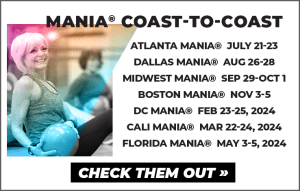 The YMCA of South Collier (Marco YMCA) in Marco Island, Florida, provides a model of how a fitness facility can respond to the wellness needs of its community and be a center for supporting “whole-person” health for a triple win: for its members, its staff and the local community. Residents are interested in and are returning to the Marco YMCA, which recently launched its new model of community wellness to address current health issues with support from medical partner organizations. Since the launch, hundreds of people have been guided through a personalized action plan to overcome the mental and physical effects of living through the pandemic.
The YMCA of South Collier (Marco YMCA) in Marco Island, Florida, provides a model of how a fitness facility can respond to the wellness needs of its community and be a center for supporting “whole-person” health for a triple win: for its members, its staff and the local community. Residents are interested in and are returning to the Marco YMCA, which recently launched its new model of community wellness to address current health issues with support from medical partner organizations. Since the launch, hundreds of people have been guided through a personalized action plan to overcome the mental and physical effects of living through the pandemic.
At the YMCA, participants can receive various types of medical consultations:
- COVID-19 testing, to confirm if they have had the virus or may be at risk without knowing it
- customized health screening, to identify potential health concerns
- customized mental health screening, to detect signs of anxiety, depression or substance abuse
- individualized health and wellness planning, with customized recommendations to help people recover and reconnect with their community
Program leaders hope the program can be replicated in health facilities throughout the country. For more information, visit MarcoYMCA.org.
10 Action Items for Fitness Professionals
Fitness professionals and branding, marketing and mental health experts agree that it is an industrywide challenge to shift how the fitness industry positions itself through the what (athletic performance, wellness, allied health care); how (virtual, live, indoor, outdoor, hybrid); and why (achieve a particular physique, meet an athletic goal, be healthier and happier, manage chronic conditions). New positioning for the industry is critical, however, if gyms and studios are to successfully become integral or “essential” businesses and receive wider recognition.
Experts offer the following 10 tips for how to start:
- Educate the public. “Most consumers separate the physical from the mental,” says Farel Hruska, director of education and culture at Chuze Fitness, San Diego. “We have work to do in educating our clients about the vast benefits we can be part of in supporting their holistic selves. Show research, talk about connections, and lean in on the power of physical movement as a means for mental and emotional release.”“Share stories, too—your own and clients’—not just facts,” says Michael Matthews, CEO and founder of Legion Athletics in Clearwater, Florida. “Compelling stories are far more persuasive than encyclopedic information.”
- Talk about mental health. “In the past, mental health was a stigma that a lot of fitness teachers shied away from,” says San Diego–based Sadie Nardini, e-RYT500, founder of CSV Yoga® and The Yoga Shred®. “Tell people how just a few minutes of concentrated movement a day is shown to shift their mental state toward the positive and possible.” Fit pros who partner with mental health professionals can also discuss how physical activity programs fit into a client’s overall mental health treatment plan.
- Be compassionate. “Have compassion for those struggling against mental illness that they can’t just exercise away,” adds Nardini. “Let them know that they, too, can find support, more vitality and a more harmonized, balanced body—which only better serves the mind.”
- Connect to your client’s “why.” “Losing weight and body image often are directly connected to relationships,” says Reid Carr, CEO of Red Door Interactive in San Diego. “People see their outward appearance, how they’re seen in the world, as influencing who they attract and how; it becomes part of their identity. While this feels external to those who want to change these people’s perspective, this shift does have a real impact on their lives and comes from a very human place.“If you can connect to their why, then you have a chance to make that shift happen. . . . Making that shift from body composition and weight is difficult because, while superficial, they are visual and more easily tracked. Ultimately, it’s about getting people to be willing to connect more deeply within themselves—their feelings and emotions—to help make that change.”
- Dig deep and engage. To connect more deeply with your clients’ whys, Billy Polson, CSCS, co-founder of The Business Movement in San Francisco suggests asking people about a goal they list on their intake forms, such as “Lose the COVID 20,” and talking about it. “Dig deeper,” he says. “What does [that weight loss] mean for their life? Get specific. Are they looking for more connection? Relate to that reason. Ask, ‘How can I make your life better?’ Be understanding of the journey they’re on.”“For many years, I thought to be a fitness ‘expert,’ I should know everything, but it’s not our job to know everything,” says Petra Kolber, author, speaker, DJ and digital nomad. “Our job is to share what we know. When we ask open-ended questions that allow us to get to know the values, hopes and dreams of our clients and combine our skill set with their inner wisdom, we can create a different conversation around the fitness journey.”
- Track mood. “Encourage clients to track their moods,” says Hruska. “What gets recorded tends to get repeated.” Help clients connect better moods with workout days. Use a notes app, calendar, or app like MoodTracker.com, MyTherapy, RealifeChange® or Daylio to observe consistent moods and connect changes in mood with behaviors and events.
- Dispel fitness fears. “Create a warm, kind atmosphere,” says Mark Fisher, founder of Mark Fisher Fitness and Business for Unicorns, New York City. Fisher welcomes prospective clients with this message: “We help people who hate gyms find a fitness home they actually love.” Fisher highlights an enjoyable, unintimidating fitness experience where people feel welcome, not awkward or foolish, particularly if feeling welcome has not been their experience.Victor Brick, co-founder and CEO of Planet Fitness Growth Partners, Miami, recommends directly addressing a new member’s five fears: physique anxiety, not knowing anyone, feeling like a klutz, feeling stupid—not knowing what to do and not wanting to ask—and the hard sell.Polson notes that people are also fearful for their safety. “If you’re using masks, physical distancing and controlling check-in with temperature readings, let people know. Post pictures on your home page of people wearing masks, show people interacting in joyful connectivity, post testimonials sharing mental health benefits, such as, ‘I sleep better,’ ‘My focus is back’ and ‘I feel better.’ Provide social proof and reassure people.”
- Link programs with benefits and current roadblocks. Nardini offers 10-minute “stress rescue yoga” and a 15-minute “anxiety release” HIIT workout. Jessica H. Maurer, FIT4MOM® senior instructor of instructor development in Asheville, North Carolina, suggests using marketing messages like, “Skip the second cup of coffee and energize in our early morning classes” or “Need to unwind after a long day? Try our evening classes for better sleep.”
- Address the fatigue barrier. Stress, anxiety and depression can make people feel tired. Let people know movement can help. “A top reason for not exercising is feeling tired . . . paradoxically, low-to-moderate physical activity makes most people feel energized, not fatigued,” says Patrick J. O’Connor, PhD, FACSM, professor of kinesiology at the University of Georgia in Athens.
- Offer shorter workouts. “People are looking for ‘less is more,’ shorter, compact microworkouts that give big results in less time,” says Nardini. “Make your paid classes under 30 minutes. Also offer 1- to 5-minute, value-based videos on social media to help people—and better familiarize them with your style.”
 About the Author: Shirley Eichenberger-Archer, JD, MA
About the Author: Shirley Eichenberger-Archer, JD, MA
Shirley Archer, JD, MA, is an internationally acknowledged integrative health and mindfulness specialist, best-selling author of 16 fitness and wellness books translated into multiple languages and sold worldwide, award-winning health journalist, contributing editor to Fitness Journal, media spokesperson, and IDEA’s 2008 Fitness Instructor of the Year. She’s a 25-year industry veteran and former health and fitness educator at the Stanford Prevention Research Center, who has served on multiple industry committees and co-authored trade books and manuals for ACE, ACSM and YMCA of the USA. She has appeared on TV worldwide and was a featured trainer on America’s Next Top Model.
Please find the original article HERE
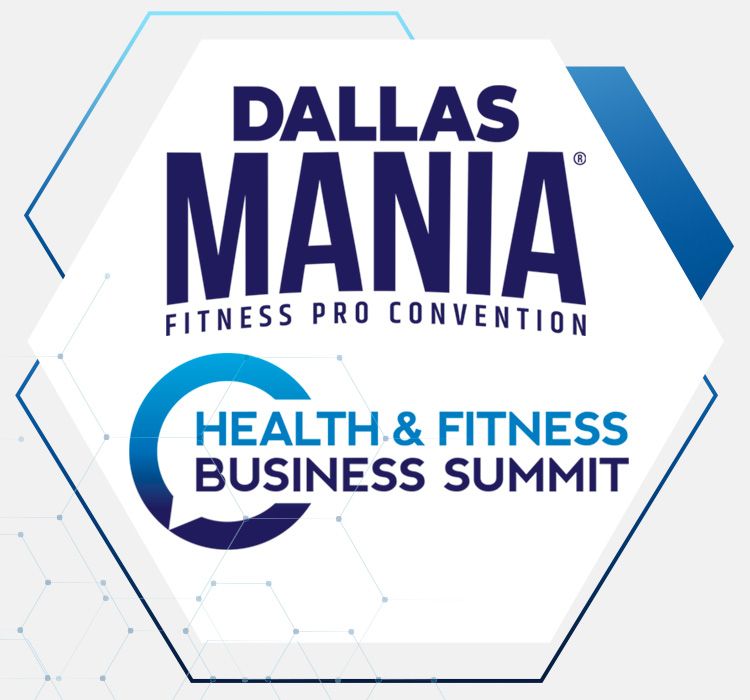
Dallas MANIA®
Health and Fitness
Business Summit
Do you crave inspiration, new ideas, and a network of like-minded professionals? Look no further than the SCW Health & Fitness Business Summit, August 25-27 at the Westin Galleria Dallas! Our larger-than-life 3-day weekend includes cutting-edge educational sessions and access to industry leaders and influencers. Whether you’re a seasoned entrepreneur or just starting out, there’s programming designed for everyone to grow and become a part of a thriving business community.

Don’t Miss a Word
Talks & Takes
With the next episode of Talks & Takes not airing until Wednesday, July 26, now’s your chance to catch up! Listen to previously aired episodes, covering past & current news along with banter about the hottest topics in health & fitness. Don’t miss a single round table discussion led by industry experts Brent Darden, Bill McBride, Blair McHaney, and SCW’s very own Sara Kooperman, JD.
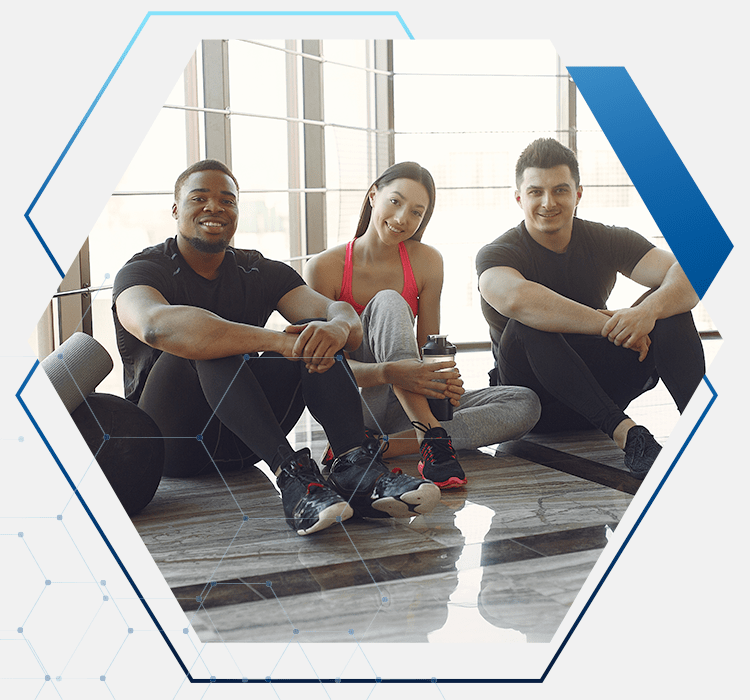
Looking to Hire?
SCW Can Help
In Need of Teachers, Trainers, Directors, or Managers? SCW’s new FREE JOB BOARD is supporting the industry’s need for qualified fitness pros.
Health & Fitness Business News – November 2024
Health & Fitness Business News – October 2024
Health & Fitness Business News – June 2024
Health & Fitness Business News – May 2024
Health & Fitness Business News – April 2024
Health & Fitness Business News – February 2024
Health & Fitness Business News – January 2024
Health & Fitness Business News – December 2023
Health & Fitness Business News – November 2023
Health & Fitness Business News – October 2023
Health & Fitness Business News – September 2023
Health & Fitness Business News – August 2023
Health & Fitness Business News – July 2023
Health & Fitness Business News – June 2023
Health & Fitness Business News – May 2023
Health & Fitness Business News – April 2023
Health & Fitness Business News – March 2023
Health & Fitness Business News – February 2023
Health & Fitness Business News – January 2023
Health & Fitness Business News – December 2022
Health & Fitness Business News – November 2022
Health & Fitness Business News – October 2022
Health & Fitness Business News – September 2022
Health & Fitness Business News – August 2022
Health & Fitness Business News – July 2022
Health & Fitness Business News – June 2022
Health & Fitness Business News – May 2022
Health & Fitness Business News – April 2022
Health & Fitness Business News – March 2022
Health & Fitness Business News – February 2022
Health & Fitness Business News – January 2022
Health & Fitness Business News – December 2021
Health & Fitness Business News – November 2021
Hyatt Regency Dulles
Herndon, VA
Hyatt Regency SF Airport
Burlingame, CA
Caribe Royale Orlando
Orlando, FL
May 1-4, 2025
May 2026
Grand Hyatt Atlanta Buckhead
Atlanta, GA
July 24-27, 2025
July 2026
Westin Galleria Dallas
Dallas, TX
August 21-24, 2025
August 28-30 2026
Rosemont Chicago O’Hare
Rosemont, IL
Oct. 2-5, 2025
Oct. 2-4 2026
Doubletree by Hilton
Danvers, MA
Nov. 13-16, 2025
Nov. 13-15, 2026



